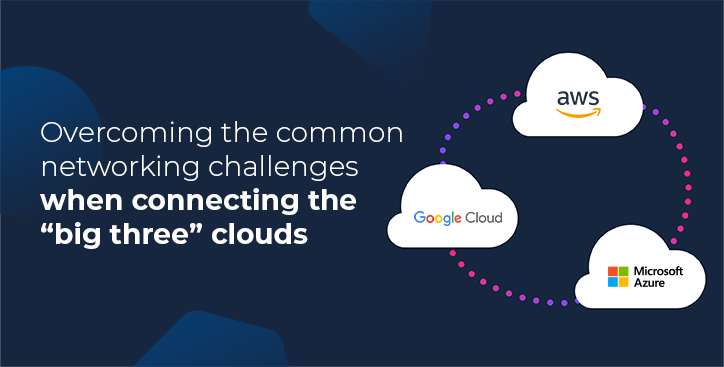What is a multi-tenant cloud?
By Alex Hawkes|8 February, 2024

Multi-tenant clouds offer cost effective, flexible, scalable, and secure access to cloud services. If your organisation is thinking about using cloud services, multi-tenant clouds are an option you should carefully consider.
To help you understand more, here we explain what multi-tenant cloud means, how multi-tenant clouds work, and the benefits they can offer as a cloud computing solution.
What is cloud multi-tenancy?
With a multi-tenant cloud, multiple customers (tenants) share the same cloud service, the same operating environment, the same storage and hardware. However, each tenant’s data, applications, and process are isolated, ensuring privacy and security.
Multi-tenancy is different from virtualization, where each customer is served by a virtual environment with its own operating system, as multi-tenancy involves a single instance of the cloud service being used by multiple tenants.
Think of a multi-tenant cloud like a shared apartment building. Each tenant has their own apartment, but all the tenants share the building’s infrastructure that delivers power and water and other services. In this analogy, the company running the cloud is the landlord that sets overarching rules and that meets the requirements of each tenant.
Examples of multi-tenant clouds
Multi-tenant clouds are likely more widespread than you realise, with most public cloud operations delivered as multi-tenant services. Common examples of multi-tenant clouds include:
- Productivity software like Microsoft 365 and Adobe Creative Cloud
- HR management applications like Workday
- Email services like Gmail and Outlook
- Content management systems like WordPress.com
- CRM software like Salesforce
- Web hosting platforms like Amazon Web Services, Azure, and Google Cloud
- Online storage solutions like DropBox
- Software development platforms like GitHub
- Streaming services like Netflix, Disney+, and Amazon Prime Video
How does multi-tenancy cloud architecture work?
Multi-tenancy cloud services are based on:
- Tenant isolation: Each tenant's data and processes are isolated from one another.
- Resource pooling: Resources, including computing power, storage, and bandwidth, are pooled and dynamically allocated among tenants based on their needs at any given moment, ensuring optimal resource utilisation and efficiency.
- Scalability: Multi-tenant services are inherently scalable, allowing cloud service providers to dynamically allocate resources up or down based on demand. Tenants benefit from this scalability by accessing the resources they need when they need them.
- Customisation: Whilst the underlying software instance is shared, tenants can usually customise and configure their individual instances to meet their specific requirements.
- Security: Multi-tenant cloud providers implement stringent security measures to safeguard the privacy and integrity of each tenant's data, including encryption, access controls, and regular security audits.
How do multi-tenant clouds differ from single tenant clouds?
The key differences that make multi-tenant clouds distinct from single tenant clouds include:
|
Single tenant clouds |
Multi-tenant clouds |
|
Serves a single tenant with one instance of each service |
Serves multiple tenants with a single instance of each service repeated across tenants |
|
A higher cost paid to have sole access to cloud resources |
Cost effective access to shared services |
|
Data is secured with a private infrastructure |
Tenant data is isolated and secure |
|
Scalability is defined by private infrastructure availability |
Offers efficient scalability |
|
Relies on the operator for service and maintenance |
Relies on the vendor for service and maintenance |
What are the benefits of multi-tenant clouds?
Multi-tenant cloud services take advantage of existing architecture to deliver:
- A pre-existing managed service: Multi-tenant cloud providers offer services that are ready to run, that are managed and maintained, and that can be used with little to no client setup. Clients don’t have to worry about maintenance, updates, or upgrades to infrastructure, as those tasks are handled by the cloud service provider.
- Lower costs: With tenants sharing the same infrastructure, multi-tenant cloud service providers can offer cloud services at low and competitive costs.
- Efficient resource scaling: Multi-tenant clouds ensure optimal utilisation of resources across clients, adjusting resource allocation as tenants’ usage fluctuates. This is ideal for organisations with varying workloads, as they can access additional resources during peak times and scale down during periods of lower demand.
- Flexibility and customisation: Although sharing the same underlying software, tenants usually have options to customise to meet their specific requirements. This flexibility allows organisations to tailor applications to their unique workflows and processes.
- Security: Multi-tenant clouds implement robust security measures to ensure the isolation and protection of each tenant's data. This centralised approach to security often results in higher levels of protection compared to individualised solutions.
What about a hybrid cloud approach?
With hybrid cloud computing, you combine a mixture of private and public cloud services with on-site or on-computer services, in order to deliver a bespoke end-user experience.
Hybrid cloud computing involves blending custom applications with pre-existing services, and multi-tenant cloud services are an ideal pick for when established software is required for employees. For instance, you may manage email, productivity software, and backup storage via a multi-tenant cloud service, whilst custom software that’s unique to your organisation is managed on-site.
Are multi-tenant cloud services right for my organisation?
Multi-tenant client services are ideal in situations where your organisation needs access to pre-existing cloud services, where value for money, easy scalability, customisation, and security are required. And if you’re ready to take the next step, Console Connect’s easy-to-use self-service portal can help you manage your multi-tenancy cloud connectivity with ease.

.jpg)





.jpg)

